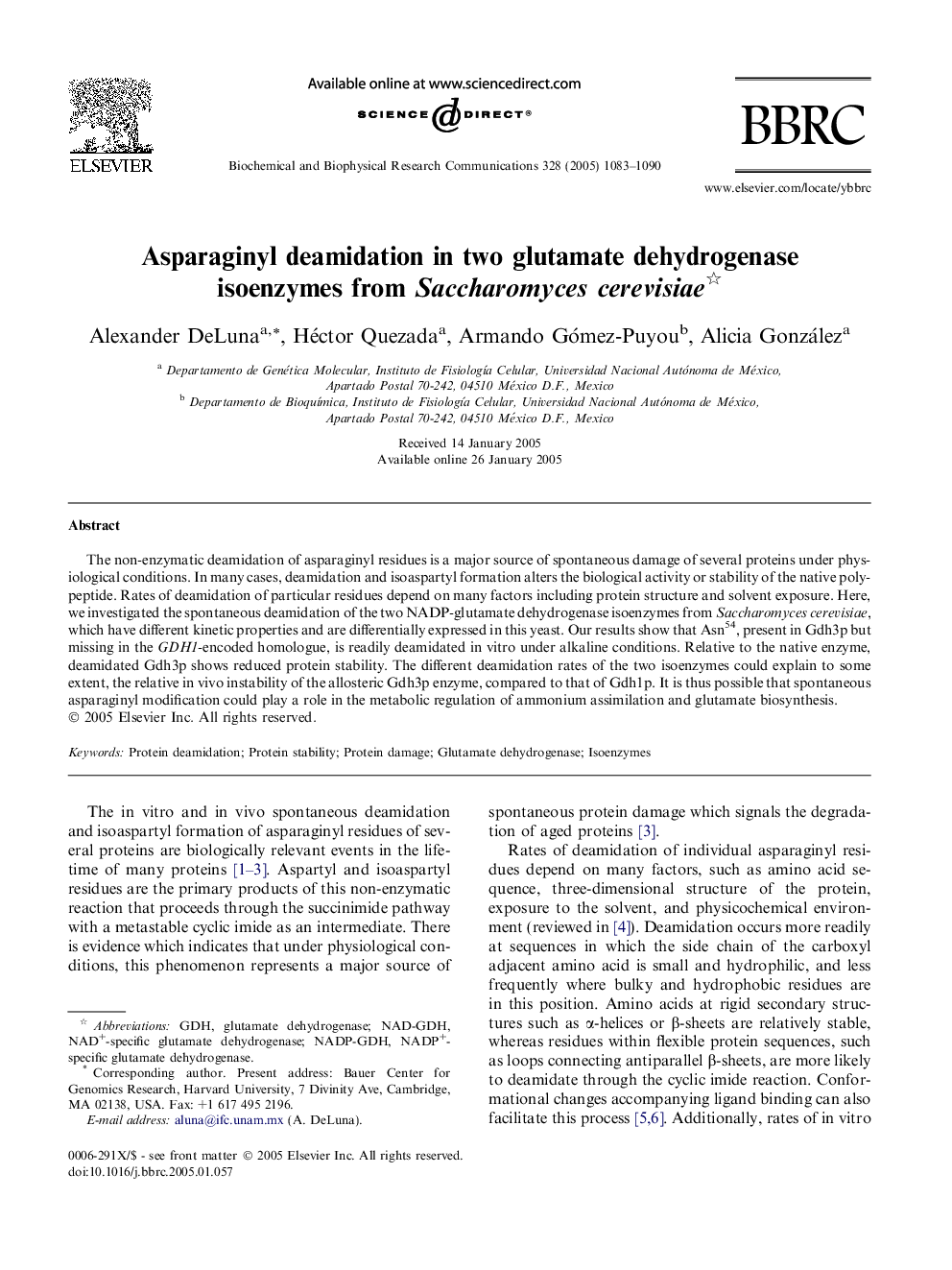| Article ID | Journal | Published Year | Pages | File Type |
|---|---|---|---|---|
| 10770635 | Biochemical and Biophysical Research Communications | 2005 | 8 Pages |
Abstract
The non-enzymatic deamidation of asparaginyl residues is a major source of spontaneous damage of several proteins under physiological conditions. In many cases, deamidation and isoaspartyl formation alters the biological activity or stability of the native polypeptide. Rates of deamidation of particular residues depend on many factors including protein structure and solvent exposure. Here, we investigated the spontaneous deamidation of the two NADP-glutamate dehydrogenase isoenzymes from Saccharomyces cerevisiae, which have different kinetic properties and are differentially expressed in this yeast. Our results show that Asn54, present in Gdh3p but missing in the GDH1-encoded homologue, is readily deamidated in vitro under alkaline conditions. Relative to the native enzyme, deamidated Gdh3p shows reduced protein stability. The different deamidation rates of the two isoenzymes could explain to some extent, the relative in vivo instability of the allosteric Gdh3p enzyme, compared to that of Gdh1p. It is thus possible that spontaneous asparaginyl modification could play a role in the metabolic regulation of ammonium assimilation and glutamate biosynthesis.
Related Topics
Life Sciences
Biochemistry, Genetics and Molecular Biology
Biochemistry
Authors
Alexander DeLuna, Héctor Quezada, Armando Gómez-Puyou, Alicia González,
